
About Andrew Cusack
 Writer, web designer, etc.; born in New York; educated in Argentina, Scotland, and South Africa; now based in London.
Writer, web designer, etc.; born in New York; educated in Argentina, Scotland, and South Africa; now based in London. read more
News
Blogs
Reviews & Periodicals
Arts & Design
World
France
Mitteleuropa
Knickerbockers
Argentina
The Levant
Africa
Cape of Good Hope
Netherlands
Scandinavia
Québec
India
Muscovy
Germany
Academica
The Spott Estate, Dunbar
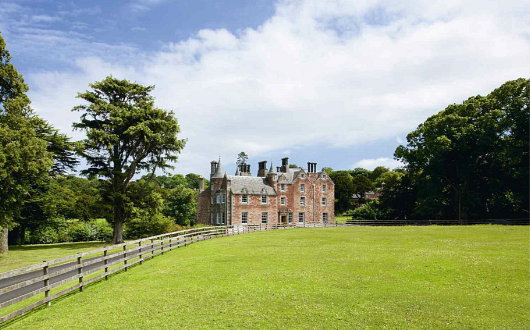
HERE IS A lordly demesne! In East Lothian, thirty-one miles from the centre of Edinburgh and three from the Royal Burgh of Dunbar, sits the Spott House and estate, now on the market from Knight Frank. The property is a whopping 2,463 acres in total, including 1,779 acres of arable land, 214 of pasture, and 356 acres of woodland. The estate has more than quadrupled in size in the past decade, under the ownership of the Danish-born Lars Foghsgaard, who bought just 600 acres in the year 2000.
As The Times wrote of Mr. Foghsgaard, “Clad in tweed jacket, plus fours and Hunter wellingtons, with several brace of partridge in his hand and his labrador at his side, he looks the very image of the country gentleman as he strides though his East Lothian estate.”
“The previous owner was very involved in the land,” Mr. Foghsgaard told the Times. “I am not a farmer, so I employed a farm manager: it’s crucial to have the necessary skills and connections in the area to do the job well, and as a foreigner I did not have those.” But the Dane does enjoy seeing the workings of the farm. “When I walk the dog, I always pass through the cowshed, where we have lambs being born each day — it’s such a joy to see.”
The arrival of grandchildren back in Denmark, however, has caused the owner to head back home and put Spott on the market. This is one of the greatest Scottish estates to come up for sale in many years. The listing from Knight Frank says ‘price on application’, but the agents have told the press they’d entertain offers in the region of… gulp… £25 million (That’s about €29m, $39m, or R279m).
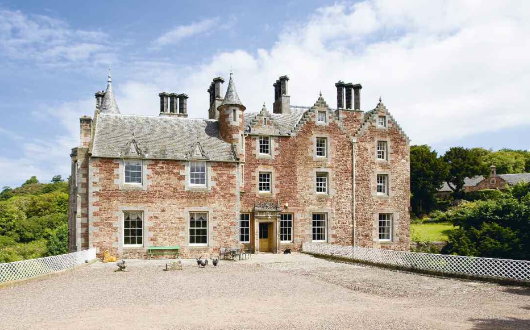
Spott House, with its views to the North Sea, has three reception rooms, a study, billiards room, kitchen, nine bedrooms, eight bathrooms, cellar, gun room, and staff flat, encompassed by the gardens and grounds. The site of has been occupied since 1150, with a tower house constructed in 1640, and remodelled by William Burn, the pioneer of the Scots Baronial style, in 1830.
Originally a family estate of the Hays of Yester, Spot is reputed to have housed Cromwell during the Battle of Dunbar in 1650. In 1830, the Hays sold Spott to James Sprot, who had the house remodelled to its present size and general appearance. The estate remained in his family until 1947, when it was sold to Sir James Hope. It was eventually sold to the Lawrie family, who sold it to the present owner in 2000.
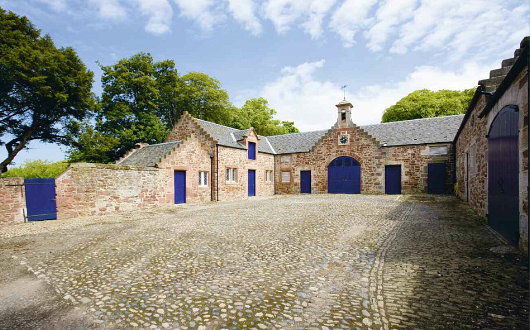
The estate includes additional farm buildings, among them fourteen cottages of traditional construction, a stable yard, cattle court, dovecot, and other such steadings.
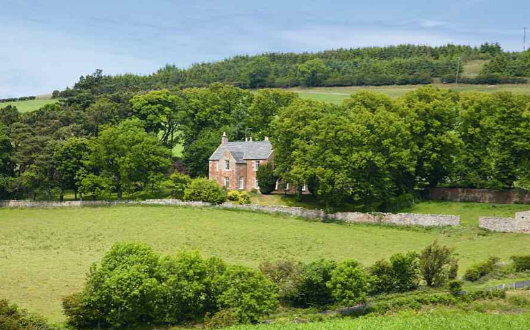
Brunt Farmhouse, a sandstone structure at Spott, enjoys views to the south. With three reception rooms and seven bedrooms, it’s currently used for holiday lets and shooting parties.
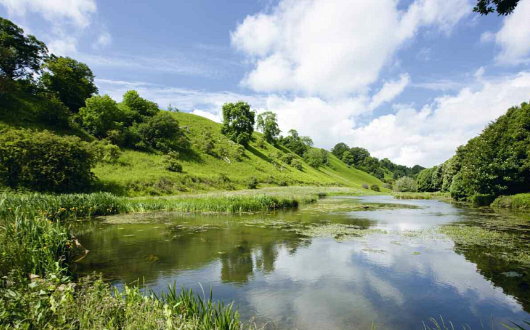
Speaking of shooting, the estate provides ample opportunities for roe deer stalking, duck flighting, driven partridge and pheasant shoots, as well as trout. In the 2008–09 season, the shooting totals at Spott were 3,859 pheasant, 3,169 partridge, 113 duck, 40 woodcock, 18 roe buck.
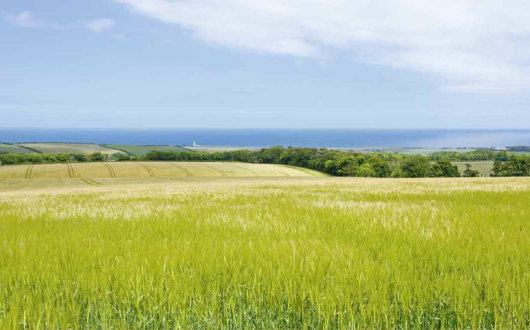
The farms feature a high yield of wheat, barley, and oilseed rape. There are also seventy suckler cows, and 400 ewes.
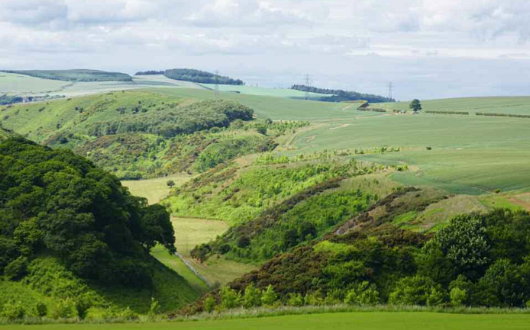
Mr. Foghsgaard is keen to rid any potential buyers of their stereotypes of the Scottish climate: “The rainfall here is less than twenty-seven inches a year compared with the Scottish average of forty-four. Everyone assumes Scotland is wet, but we have lots of sunny days here.”
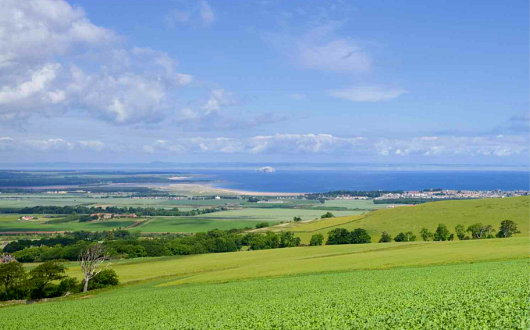
Search
Instagram: @andcusack
Click here for my Instagram photos.Most Recent Posts
- Silver Jubilee November 21, 2024
- Articles of Note: 11 November 2024 November 11, 2024
- Why do you read? November 5, 2024
- India November 4, 2024
- The Lithe Efficiency of the Old Constitution November 4, 2024
Most Recent Comments
Book Wishlist
Monthly Archives
Categories



A “whopping 2,643 acres”? Piffl. That’s nothing, particularly in Scotland. East Lothian itself is not known for particularly large estates (the largest today is the 6,000 acres of the Earls of Haddington, not including the 7,000 acres they hold in neighbouring Berwickshire, but nearby are the 65,000 acres of the Dukes of Roxburghe and the 50,000 (out of a total of 250,000) of the Dukes of Buccleuch. The Catholic Marquess of Lothian holds 18,000 acres
One could go on, but the point has been made.
I didn’t know that such large estates existed so close to Edinburgh; I had assumed they were all up in the Highlands and West.
Well, if it comes to that:
1) Earl of Rosebery, 11,000;
2) Lord Borthwick, 10,000;
3) Dundas of Arniston, 10,000;
4) Earl of Wemyss & March, 9,400;Again, one could go on.
Of course this is all nothing like it was about 120 years ago, when the Scottish estates were truly huge. The list was topped by the Duke of Sutherland, with (well, I think “whopping” will do now) 1,360,000 acres, followed by Buccleuch with nearly 500,000. Sutherland’s lands were indeed up North, but Buccleuch’s were all over the Borders and the Southwest.
But the greatest landlords of all (outside of fabulous Russia) were the Esterhazys, whose acres could at one time be counted at over four million. But much of their land was not arable, and was used to graze sheep.
The truly princely realms were those of the Schwarzenbergs and the Liechtensteins, which were not only extensive but also rich and productive, and included prosperous towns by the dozen. The town and country palaces and castles of the Schwarzenbergs in Bohemia and the Liechtensteins in Moravia have to be seen to be believed. Their palaces in Vienna are rightly world famous. THESE were aristocrats!
In the United States Ted Turner seems to be the largest land owner. His Vermejo Park Ranch is 588,800 acres in size and his total holdings in the United States come to 1,910,585 acres.
I think you should buy it… it would suit you very well!
But you need an Italian wife to cook for you also!
“Ted Turner”? Who he?
In any case, American “estates” are artificial constructs and do not count.
No interior shots? How can I possibly imagine myself hold up by the fire without interior shots?
To Michelle F. Carroll
Google “Spott Estate”. One of the entries is the PDF brochure for the estate, (also found on Knight Frank’s website. The PDF has some interior shots. Imagine as much as you like.
A beautifully maintained estate to my eyes, and I suspect that more of the same will be coming onto the market in the near future.
I direct this question at ‘Baron von/van Hetterscheidt’:
Why do you engage in this excruciating bragging on behalf of families who do not need it and would hold you in contempt for doing so? Assuming that you are an actual bona fide baron, then you clearly treat your title cheaply if you are so quick to bandy it about the internet. Good wine needs no bushel, eh Baron?
I have had to endure people like you in social settings before – invariably the loudest and most shrill voice in the room, banging on about your social superiors who in reality avoid you like the plague and pointedly do not talk about themselves, because that is how they were raised.
I note that one such overbearing snob has been mentioned by Andrew Cusack some months ago – not in that context of course, but I and others who have had to spend time in Dublin are all too aware of the individual in question, who imagines that snobbish pretence and camp impersonation can lead to admission to the upper class (to the extent that such exists in Ireland anymore of course…).
I could engage with you in kind, but there would be no point and….well, my own background prevents me from doing so.
Lighten up, Mr Fraser!
The love of beauty, history, grandeur and great families has nothing to do with vulgar snobbery. I can take or leave, as they come, the present day representatives of the families whose past glories I am happy to celebrate. Some, like Duke Paul of Oldenburg, are worthy of respect; others, like the Prince of Hanover, are not. Some Habsburgs deserve unqualified praise; others, not.
But the splendour of the Belvedere, the historical interest of Konopischt, or the magnificence of the Imperial collections in Vienna are unaffected by either judgement.
The Esterhazys were a mediocre family, but Haydn redeems them. Or was he too a miserable snob?
I have been many places in my life. I have climbed 14,000 foot peaks in Colorado, places that transitions one into the ‘heavens’. I have slept in the depths of The Grand Canyon where one learns the power of water and time. I have found life in Death Valley where I breathed in the perfume of the mesquite kilns of the early indians. I have walked the ruins of Iran’s Persepolis. I live in a ground floor, one bedroom apartment near Washington, DC. My grandmother was born at Spott in the late 1700’s. The present owners were kind enough to let me experience this special Spott.
Something is missing in some of the above comments about Spott and other estates…..the heart, love of the land, an appreciation of its colors presented by undulating hills, the reflecting light of the waters, the freshness of the air. It is all a comparison of who owns what and how much of EARTH. Who will ‘own’ it when you are dead? What has survived of my grandmother, Mary Hay, are her shoes worn at Spott, a will that attempts to leave her estate to all of her children equally, and wonderful stories about her. Somehow, I feel very rich.
Shirley Scott
What a beautiful place! Andrew, I wish it could be yours.
To ‘Baron’ von/van Hetterscheidt’:
I’m as light as a feather dear boy, but am left somewhat confused by your response. You may be used to conversing with imbeciles, but unfortunately I am not one. Your answer strikes me as the sort of high-flown guff that is often contained in one of those God-awful ‘European History for Beginners’ classes which attract the ignorant, Americans, and the middle classes.
Tragically, neither I nor science have cracked the ability to travel through time, so I cannot say whether Haydn was or was not a snob, but I am struck by your remark that the Eszterházy family were mediocre – I have to ask rhetorically as to who you are to so readily dismiss them, as I find it hard to credit that you could be so utterly ignorant of their history.
I should declare an interest, in that my maternal great-grandmother was an Eszterházy (of Zólyom), so I suppose I could be accused of being partisan on this question. (Distant) family loyalty aside, if the Eszterházys were mediocre by your standards, I do have to wonder by what criteria you judge such families?
A thousand acres is just a meadow in Texas.
Dear lady, a thousand acres of glorious Borders countryside is worth any number of acres of Texas badlands.
But you are not wrong about the size of Texan holdings. My own Dallas ranching relations’s 100,000 acre spread was considered a very moderate one.
The press informs us that a daughter of Mr Foghsgaard has just become engaged to Lord Bingham, son of the (late?) Lord Lucan. He is referred to in the announcement as “of Spott House” so presumably a buyer has not yet been found.
As a Dunbar peasant and a descendant of long-ago Scottish landed gentry I have read the postings arising from the Spott estate with interest and some amusement.
What is missing is a comment from Australia. My impression when living in that country was that the Aussies looked on the Texans as hobby farmers.
Who does own the biggest patch of dirt?
Well hi from the GoldCoast Australia, bless the Texans, our farms involve 3/4 million acres and the previous owners of Spott house I know rather well, a terrific Scottish family, Gday!
Xander seems to like picking on Baron von Hetterschedt. Not sure why he has an ax to grind with the poor baron. I but I am just a bumpkin American and don’t understand the Europeans. I’d like to buy the Spott Estate. The price is pocket change for us in the Silicon Valley.